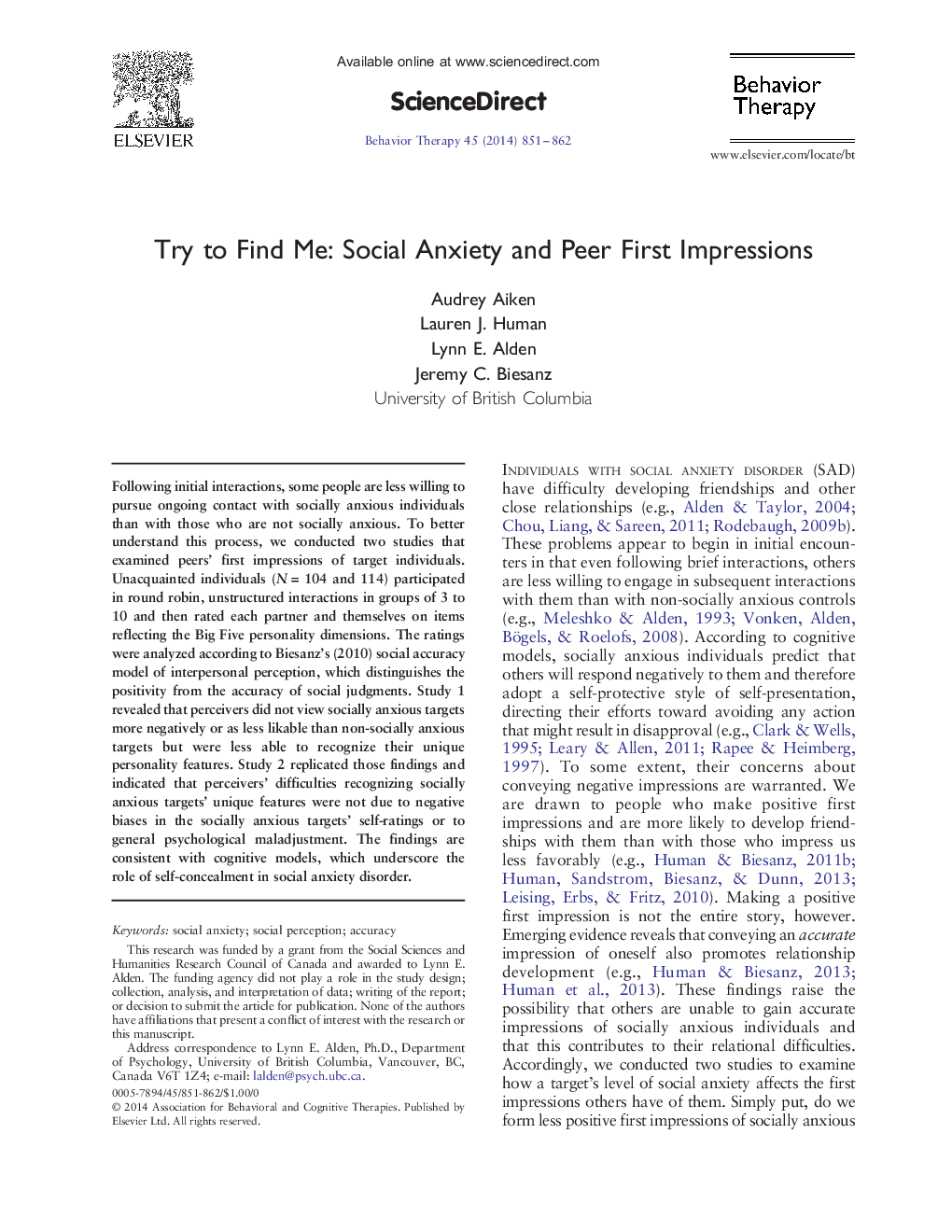| کد مقاله | کد نشریه | سال انتشار | مقاله انگلیسی | نسخه تمام متن |
|---|---|---|---|---|
| 901402 | 915865 | 2014 | 12 صفحه PDF | دانلود رایگان |
• We examined whether social anxiety affects peers’ first impressions of target individuals.
• Peer ratings were analyzed using a technique that distinguishes the positivity from the accuracy of social judgments.
• Peers’ first impressions of socially anxious targets were not more negative but were less accurate.
• Peers have difficulty identifying the unique personality features of socially anxious individuals.
Following initial interactions, some people are less willing to pursue ongoing contact with socially anxious individuals than with those who are not socially anxious. To better understand this process, we conducted two studies that examined peers’ first impressions of target individuals. Unacquainted individuals (N = 104 and 114) participated in round robin, unstructured interactions in groups of 3 to 10 and then rated each partner and themselves on items reflecting the Big Five personality dimensions. The ratings were analyzed according to Biesanz’s (2010) social accuracy model of interpersonal perception, which distinguishes the positivity from the accuracy of social judgments. Study 1 revealed that perceivers did not view socially anxious targets more negatively or as less likable than non-socially anxious targets but were less able to recognize their unique personality features. Study 2 replicated those findings and indicated that perceivers’ difficulties recognizing socially anxious targets’ unique features were not due to negative biases in the socially anxious targets’ self-ratings or to general psychological maladjustment. The findings are consistent with cognitive models, which underscore the role of self-concealment in social anxiety disorder.
Journal: Behavior Therapy - Volume 45, Issue 6, November 2014, Pages 851–862
